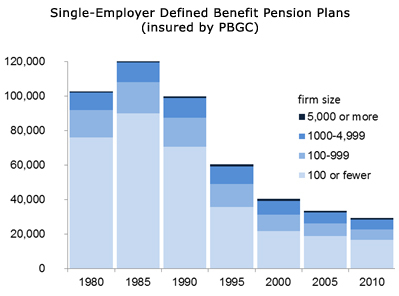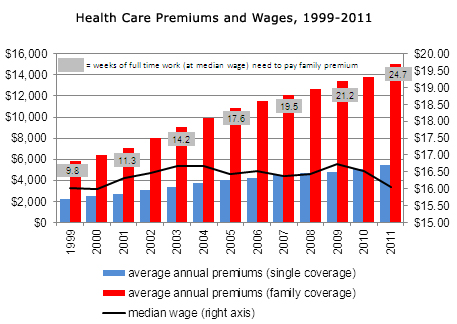August 27, 2012
The recent work of CEPR’s John Schmitt and Janelle Jones shines a harsh spotlight on the dramatic decline in “good jobs” over the last generation. In Where Have All the Good Jobs Gone?, Schmitt and Jones show that the share of good jobs (defined by an earnings threshold of $18.50/hr and the job-based provision of health coverage and a retirement plan) has fallen—even as the age and educational attainment of the workforce has risen.
The interactive graph below summarizes their findings: Select any combination of demographics (all workers, women, men) in the upper right; and any combination of “good job” elements (earnings, health coverage, retirement plan) in the bottom pane. Start with the earnings threshold for all groups. Here we see decent gains for women, although no more than we might expect given gains in labor productivity and educational attainment over the same span. The share of men at this threshold, by contrast, falls—from about 57.5 percent in 1979 to about 54.5 percent in 2010. Selecting a single demographic underscores the contributing factors. For men, declining pension and health coverage (combined with flat earnings) led to steep decline in the good job share (from 37.5 percent in 1979 to 27.7 percent in 2010). For women, health coverage has fallen less dramatically (from a lower starting point), and pension coverage is pretty flat—and together they have dampened but not erased the gains in earnings (yielding a modest increase in share of good jobs, from 12.4 percent to 21.1 percent).
It is worth emphasizing (as Schmitt and Jones do) that this run at the CPS data almost certainly underestimates the decline in good jobs. First, the baseline is not just where we were in 1979, but where we should be given the fact that workers in 2010 are older and smarter and more productive. Second, the survey data measures the provision of job-based health care and pensions, but not the quality of those plans (or their cost to workers).
Recent decades have seen a dramatic away from the traditional defined-benefit pension plan, which have been largely replaced by defined contribution plans which offer substantially less long-term security.

Source: Pension Benefit Guarantee Corporation, 2010 Data Book
And recent decades have seen a dramatic decline in the quality of job-based health care coverage, reflected in both rising premium costs (especially for family coverage) and steeper out-of-pocket copayments and deductibles.

Source: Kaiser Employee Benefits Survey (2011)
Colin Gordon is a professor and director of Undergraduate Studies, 20th Century U.S. History, at the University of Iowa.






